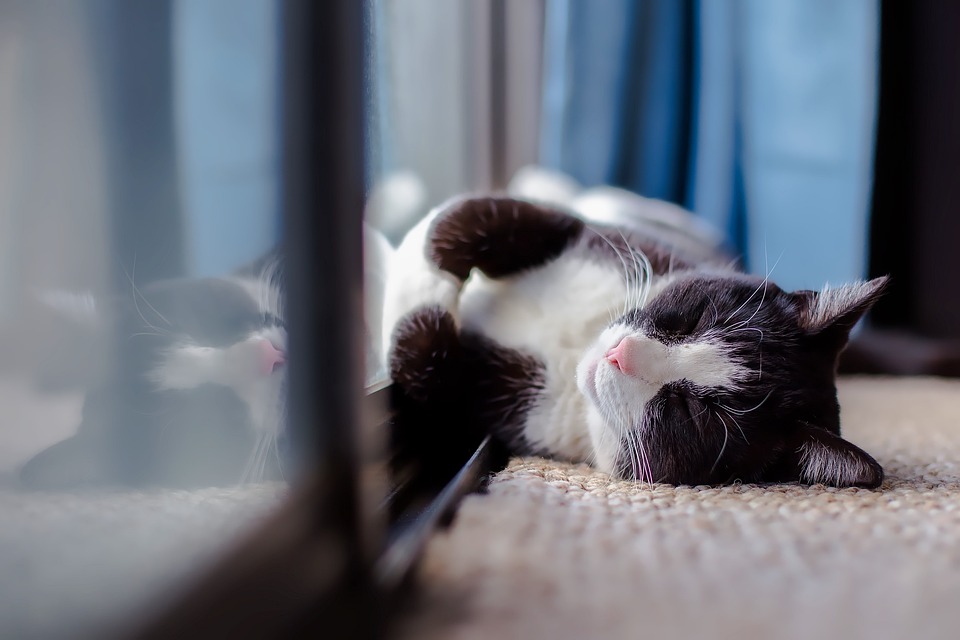Introduction:
As a responsible cat owner, it’s crucial to prioritize your feline friend’s health and well-being. One common health issue that plagues many cats today is obesity. Feline obesity can lead to a variety of serious health problems, including diabetes, arthritis, and heart disease. In this article, we will outline essential tips for preventing and managing feline obesity, ensuring your cat leads a healthy and active lifestyle.
I. Understanding Feline Obesity:
A. What is feline obesity?
Feline obesity is the excessive accumulation of body fat in cats. It occurs when a cat’s caloric intake exceeds its energy expenditure, leading to weight gain. Cats are considered obese when they weigh 20% or more above their ideal body weight.
B. How does obesity affect a cat’s health?
Obesity can have a significant impact on a cat’s overall health. It puts extra strain on their joints, leading to arthritis and mobility issues. Obesity also increases the risk of developing diabetes, heart disease, and urinary tract problems. Additionally, overweight cats may experience difficulty grooming themselves, leading to skin and coat problems.
C. What are the common causes of feline obesity?
Several factors contribute to feline obesity. Overfeeding, feeding calorie-dense foods, and excessive treats can all lead to weight gain. Lack of exercise and a sedentary lifestyle are also significant contributors. Furthermore, certain underlying medical conditions or medications may cause weight gain in cats.
II. Prevention is Key:
A. Feeding a balanced diet:
1. Choosing the right cat food: Opt for high-quality, nutritionally balanced cat food that is appropriate for your cat’s age, size, and health condition.
2. Portion control: Follow feeding guidelines provided by your cat food manufacturer to avoid overfeeding. Use a measuring cup or a kitchen scale for accurate portion sizes.
3. Avoiding excessive treats: Limit the number of treats given to your cat and opt for healthier alternatives like small pieces of lean meat or catnip toys.
B. Encouraging exercise:
1. Providing stimulating toys: Offer interactive toys, puzzle feeders, or treat-dispensing toys to keep your cat mentally and physically engaged.
2. Engaging in interactive playtime: Set aside dedicated playtime with your cat using toys that encourage physical activity and chasing.
3. Creating a cat-friendly environment: Provide scratching posts, climbing trees, and perches to encourage your cat to be active and explore its surroundings.
C. Regular veterinary check-ups:
1. Monitoring weight and body condition: Regularly weigh your cat at home or during veterinary check-ups to track any weight changes. Use body condition scoring to assess your cat’s body fat percentage.
2. Seeking professional advice and guidance: Consult with your veterinarian to develop a tailored weight management plan for your cat. They can provide dietary recommendations and monitor progress.
III. Managing Feline Obesity:
A. Dietary adjustments:
1. Consultation with a veterinarian: Work with your veterinarian to determine the appropriate calorie intake for your cat and develop a weight loss plan.
2. Prescription weight management diets: Your veterinarian may recommend specialized weight control diets that are lower in calories and higher in fiber to help your cat lose weight.
3. Meal frequency and timing adjustments: Divide your cat’s daily food allowance into smaller, more frequent meals to help regulate their metabolism and prevent overeating.
B. Exercise routines:
1. Gradual introduction of physical activity: Start with short exercise sessions and gradually increase the duration and intensity to avoid overwhelming your cat.
2. Incorporating playtime into daily routines: Schedule regular play sessions with your cat to encourage exercise and bonding.
3. Ensuring a safe and enjoyable exercise environment: Create a secure and stimulating environment for your cat to engage in physical activity. Remove any hazards that may cause injury.
C. Behavioral modifications:
1. Reducing stress and anxiety: Address any underlying stress or anxiety in your cat’s environment, as these can contribute to overeating. Provide hiding spots, vertical spaces, and a calm atmosphere.
2. Addressing emotional eating habits: Avoid using food as a source of comfort or reward. Instead, provide affection, attention, and interactive play to fulfill emotional needs.
3. Providing mental stimulation: Engage your cat in activities that stimulate their mind, such as puzzle toys or training sessions.
IV. Frequently Asked Questions (FAQs):
Q1. How can I determine if my cat is overweight or obese?
You can assess your cat’s body condition by feeling its ribs and spine. If you can’t feel them easily, your cat may be overweight. Consult with your veterinarian for a more accurate assessment.
Q2. Can indoor cats become obese more easily than outdoor cats?
Indoor cats are generally more prone to obesity due to their limited space and reduced opportunities for exercise. However, outdoor cats can also become obese if they have access to excessive food or a sedentary lifestyle.
Q3. Are there specific breeds more prone to obesity?
Certain cat breeds, such as the British Shorthair and Maine Coon, are more prone to obesity. However, obesity can occur in any breed or mixed-breed cat.
Q4. Can neutering/spaying contribute to feline obesity?
Neutering or spaying can affect a cat’s metabolism, making them more prone to weight gain. It’s important to monitor their caloric intake and provide regular exercise to prevent obesity.
Q5. Is it normal for older cats to gain weight?
Older cats may be more likely to gain weight due to reduced activity levels and changes in metabolism. However, weight gain should still be monitored and managed to prevent obesity-related health problems.
Conclusion:
By following the preventive measures and management strategies outlined in this article, you can ensure your beloved feline companion maintains a healthy weight and avoids the detrimental effects of obesity. Remember, a well-balanced diet, regular exercise, and attentive veterinary care are the keys to keeping your cat happy, active, and thriving throughout their lives.








